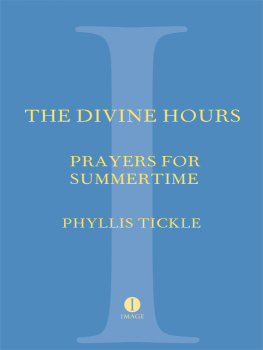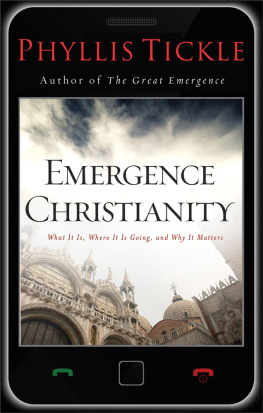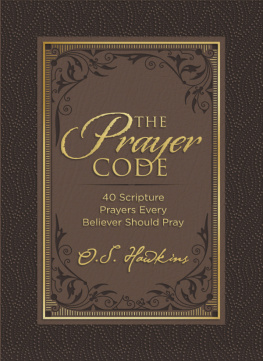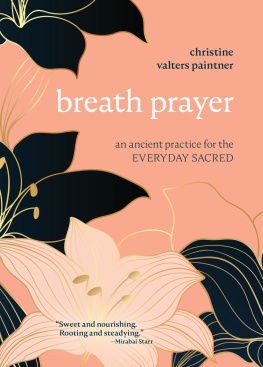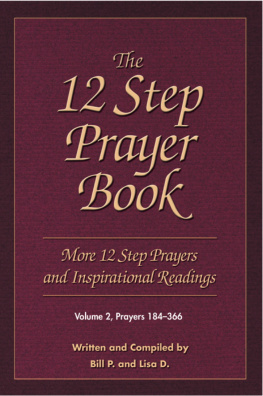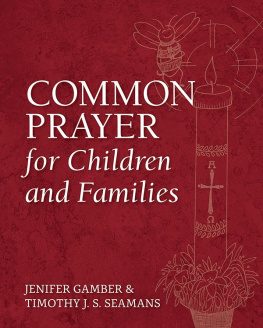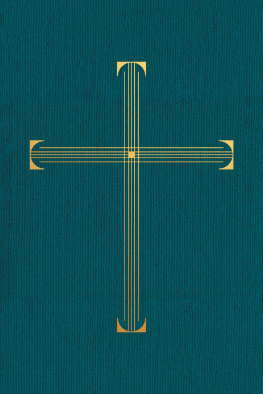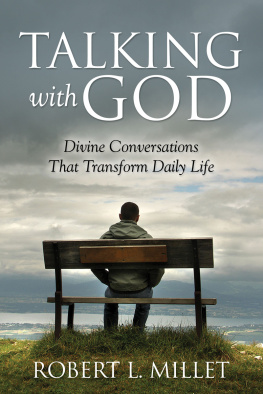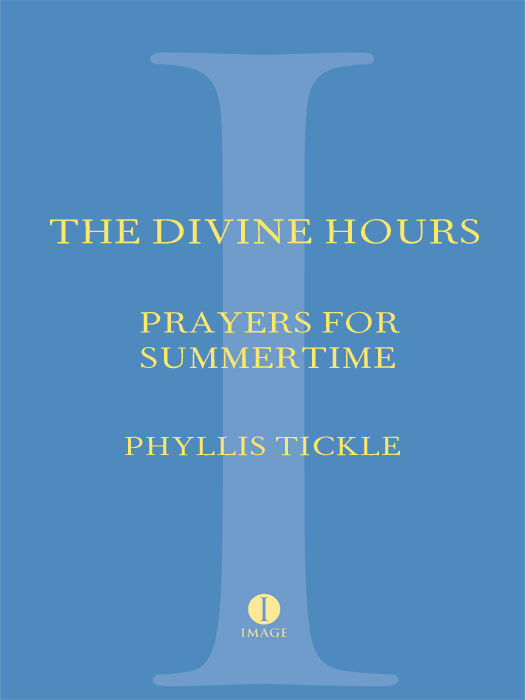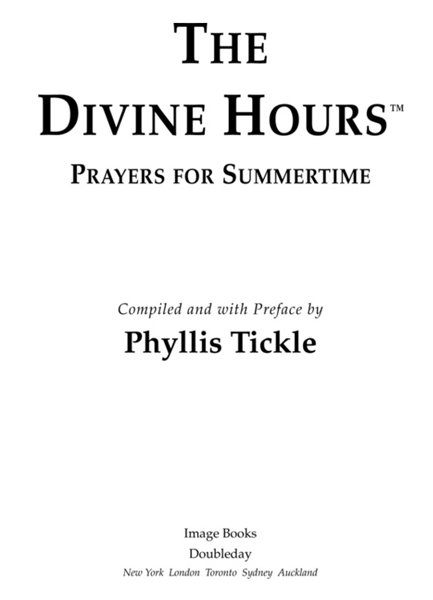The Divine Hours is a trademark of Tickle, Inc.
Contents
T HE D AILY O FFICES
An Introduction to
This Manual
F rom the beginning two things have been the necessary form and mystery of Christian spirituality. Two things, even before the closing events of resurrection, ascension, and commission, wove disparate and often renegade believers into an inspirited body of the whole, connected to God and each other.
Like a double helix rendered elegant by complexity and splendid by authority, the amalgam of gospel and shared meal and the discipline of fixed-hour prayer were and have remained the chain of golden connection tying Christian to Christ and Christian to Christian across history, across geography, and across idiosyncrasies of faith. The former is known as the food and sustenance of the Church, the latter as its work. The Divine Hours is about the second part of this double strand, the work; it is a manual for the contemporary exercise of fixed-hour prayer.
Although designed primarily for private use by individuals or by small groups, The Divine Hours may certainly be employed by larger and/or more public communities. Likewise, though designed primarily for lay use, it can as well be employed by the ordained in either private or corporate prayer.
Those already familiar with fixed-hour prayer (variously referred to as The Liturgy of the Hours or keeping the hours or saying the offices) and with its tools (the breviaries of monastic worship and the Book of Hours manuals for laity that date from medieval times) will find some modifications and innovations here. They may wish to scan what follows for explication of these changes. Others, especially those for whom keeping the hours is a new practice, may wish to read the remainder of this introduction more thoroughly.
A Brief History of Fixed-Hour Prayer
The Age of the Apostles
Fixed-hour prayer, while it is with the Eucharist the oldest surviving form of Christian spirituality, actually had its origins in the Judaism out of which Christianity came. Centuries before the birth of Jesus of Nazareth, the Hebrew psalmist wrote that Seven times a day do I praise you (Ps. 119:164). Although scholars do not agree on the hours of early Judaisms set prayers (they were probably adjusted and readjusted many times), we do know that by the first century a.d. the ritual of daily prayer had assumed two characteristics that would travel down the millennia to us: The prayers had been set or fixed into something very close to their present-day schedule, and they had begun to assume something very close to their present-day intention.
By the beginning of the common era, Judaism and its adherents, already thoroughly accustomed to fixed hours for prayer, were scattered across the Roman Empire. It was an empire whose efficiency and commerce depended in no small part upon the orderly and organized conduct of each business day. In the cities of the Empire, the forum bell rang the beginning of that day at six oclock each morning (prime or first hour); noted the days progress by striking again at nine oclock (terce or third hour); sounded the lunch break at noon (sext or sixth hour); called citizens back to work by striking at three oclock (none or ninth hour); and closed the days markets by sounding again at six oclock in the afternoon (vespers or evening hour). Every part of daily life within Roman culture eventually came, to some greater or lesser extent, to be ordered by the ringing of the forum bells, including Jewish prayer and, by natural extension, Christian prayer as well.
The first detailed miracle of the apostolic Church, the healing of the lame man on the Temple steps by Sts. Peter and John (Acts 3:1), occurred when and where it did because two devout Jews (who did not yet know they were Christians as such) were on their way to ninth-hour (three oclock) prayers. Not many years later, one of the great defining events of ChristianitySt. Peters vision of the descending sheet filled with both clean and unclean animalswas to occur at noon on a rooftop because he had gone there to observe the sixth-hour prayers.
The directive Peter received during his noon devotioni.e., to accept all that God had created as cleanwas pivotal because it became the basis of the ecumenism that rapidly thereafter expanded Church fellowship beyond Jewry. Peter was on the roof, however, not by some accident of having been in that spot when the noon bell caught him, but by his own intention. In Joppa and far from Jerusalem and the Temple, Peter had sought out the solitude of his hosts rooftop as a substitute site for keeping the appointed time of prayer.
Such readiness to accommodate circumstance was to become a characteristic of fixed-hour prayer. So too were some of the words Peter must have used. We know, for instance, that from its very earliest days, the Christian community incorporated the Psalms in their prayers (Acts 4:23-30); and the Psalter has remained as the living core of the daily offices ever since. Likewise, by c. 60 a.d., the author of the first known manual of Christian practice, the Didache, was teaching the inclusion of the Lords Prayer at least three times each day, a usage that was to expand quickly to include all the offices.
From the Apostles to the Early Fathers
As Christianity grew and, thanks to Peters rooftop vision, as it spread, so too did the practice of formalized daily prayer. The process by which the fixed-hour prayers of the first century slowly recast themselves as the Divine Hours or Daily Offices of later Christians is blurred in some of its particulars, though we can attest to the approximate date and agency of many of them.
We know from their writings that by the second and third centuries the great Fathers of the ChurchClement (c. 150-215 a.d.), Origen (c. 185-254 a.d.), Tertullian (c. 160-225 a.d.), etc.assumed as normative the observance of prayers in the morning and at night as well as the so-called little hours of terce, sext, and none or in modern parlance, nine a.m., noon, and three p.m. These daily prayers were often said or observed alone, though they could be offered by families or in small groups.
Regardless of whether or not the fixed-hour prayers were said alone or in community, however, they were never individualistic in nature. Rather, they employed the time-honored and time-polished prayers and recitations of the faith. Every Christian was to observe the prayers; none was empowered to create them.

